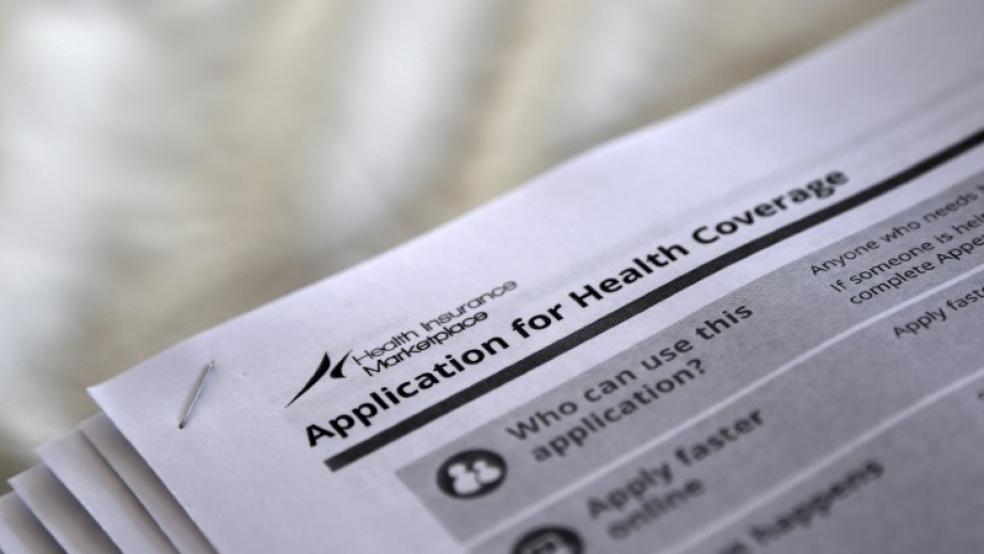Repealing the Affordable Care Act’s individual mandate, as the Republican tax plan being finalized now will likely do, would save the government an estimated $318 billion over 10 years, according to Congress’s Joint Committee on Taxation. In reality, the savings are likely to be far smaller — but even so, repeal is a small step toward a freer health care market. That is worth pursuing.
The purpose of the mandate is to give relatively healthy people an incentive to buy insurance on the individual market. The ACA requires insurance companies to cover everyone regardless of whether they have pre-existing health conditions and charge everyone the same premium regardless of health risks. It also limits how much premiums can increase with age.
To cover these costs, insurance companies raised premiums substantially for those who are young and reasonably healthy. As a result, many from this group believe they are better off not buying insurance. The individual mandate discourages them from remaining uninsured by imposing a penalty for not buying coverage.
Without the individual mandate, more healthy people would choose to be uninsured, which would lead to an increase in premiums for those who continue to buy insurance on the individual market. This, in turn, would encourage even more people to become uninsured. The Congressional Budget Office (CBO) projects that if the mandate is repealed, the number of uninsured would increase by 4 million in 2019 and 13 million by 2027.
An analyst at Standard and Poor’s estimates that the actual reduction in the number of insured would be much lower, at only 3 million to 5 million, and would save the government a total of $60 billion to $80 billion over 10 years. If this estimate is accurate, repealing the mandate won’t do much to offset lost revenue from tax cuts.
Several million more people without health insurance is nothing to shrug off, but repealing the individual mandate could force us to correct other problematic parts of the ACA. The ACA has raised costs and limited choices in the individual health insurance market. It has also increased federal government spending on health care. It has lowered health insurance premiums net of subsidies for a relatively small percentage of the population — those with relatively costly pre-existing health conditions who are not covered by employer-sponsored insurance — while raising them for almost everyone else who buys insurance in the individual or small group market.
Eliminating the individual mandate might contribute to destabilizing the individual health insurance market in some states. The CBO says that the overall market would remain stable, but premiums would increase by around 10 percent per year.
If the market does become unstable or premiums rise more rapidly, perhaps pressure on Congress would increase to reform other parts of the ACA, such as how much insurance companies are permitted to vary premiums based on differences in health risks.
One step in the right direction would be eliminating the requirement that insurance companies charge older people no more than three times what young adults pay for coverage. This rule increases premiums for younger adults by about one-third.
Two other changes could do more to encourage the healthy uninsured to buy insurance than the individual mandate does. First, eliminate the “essential health benefits” that the ACA requires all health plans to provide. These increase premiums by 3 to 17 percent.
Second, gradually remove the required community rating that prohibits insurance companies from charging higher premiums to people with pre-existing health conditions. This rule forces those in good health to pay more to subsidize the premiums of those in poor health. At the same time, tying premium subsidies more to health risks and less to income could help keep insurance affordable for people in poor health and still protect vulnerable populations.
The state of Alaska has taken a step in this direction by instituting a supplemental reinsurance program to help cover the individual market’s largest claims. Separating out those with the costliest medical conditions resulted in the insurance provider filing an average rate decrease of 22 percent for 2018.
The individual mandate has not been very effective. Allowing insurance companies to offer lower premiums to those in good health would do far more to reduce the number of uninsured Americans. Restoring people’s freedom to decide whether or not to buy health insurance, and giving them a chance to do so at market determined prices — rather than forcing a small subset of the young and healthy to cross subsidize those with serious health problems — is a worthy goal for its own sake.
As part of a transition to a better system that could include arrangements like health status insurance, we can and should find a better way to pay for subsidies for those with costly pre-existing health conditions.
Tracy C. Miller is a senior policy research editor with the Mercatus Center at George Mason University





